The Chief Marketing Officer (CMO) role is shifting in response to regional demands, organizational structure, and advances in artificial intelligence.
From increased AI spending to greater responsibility for measurable outcomes, CMOs operate in data-driven environments shaped by regulatory pressure, market readiness, and cultural expectations.
This article compares regional priorities in digital transformation, AI investment, and growth orientation across North America, Europe, Asia-Pacific, and Latin America.
It also examines forward-looking scenarios through 2040, focusing on how different combinations of AI maturity and organizational adoption may affect the structure and influence of the CMO role.
Executive Overview
Key insights and a strategic summary of the evolving CMO role
CMO Tenure Growth: 4.3 years: The average tenure of Chief Marketing Officers has increased to 4.3 years in 2025, up from 4.2 years in 2023. This reflects greater role stability and a stronger emphasis on long-term brand and customer strategy.
AI Investment Plans: 90% of marketers: 90% of marketing leaders plan to increase their investment in AI in 2025. This growth reflects the expanding use of AI for content generation, predictive analytics, campaign automation, and performance optimization.
AI Marketing Market: 48.8 billion dollars: The AI marketing industry is projected to reach 48.8 billion by the end of 2024. This includes AI-enabled platforms such as content generation tools, customer data platforms, automated media buying systems, and real-time personalization engines. These tools are becoming standard for improving decision-making speed, accuracy, and scale.
Fortune 500 CMOs: 71% of companies have a dedicated CMO. As of 2025, 71% of Fortune 500 companies have appointed a Chief Marketing Officer, affirming marketing’s strategic role in driving revenue, customer experience, and digital transformation.
AI Adoption Stages for CMO Roles
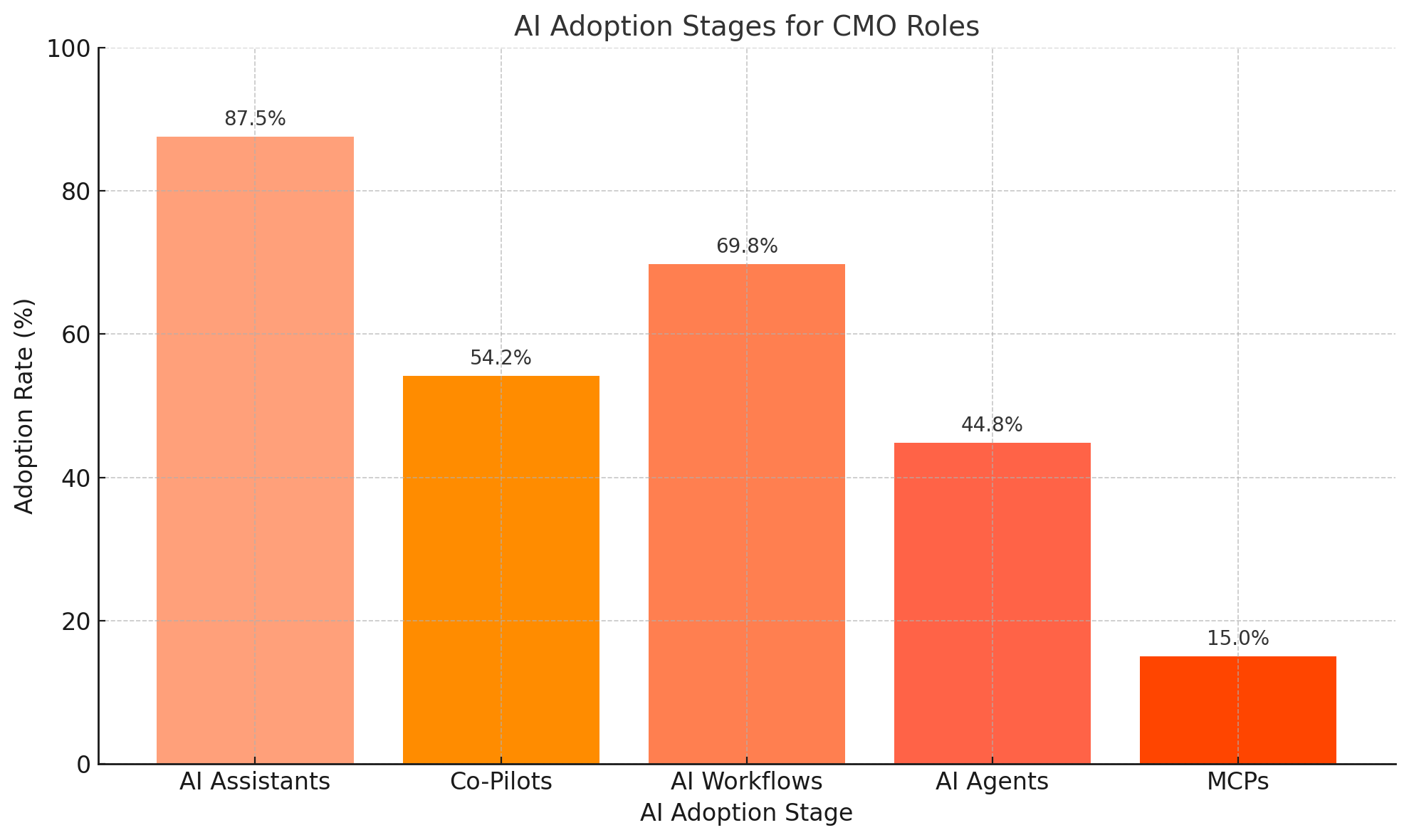
This bar chart shows how Chief Marketing Officers (CMOs) use different types of AI technologies in 2025. Each category reflects a specific application of AI in marketing operations:
AI Assistants (87.5%): CMOs extensively use AI assistants for tasks such as content generation, summarizing meetings, and automating basic workflows. Their high adoption reflects their ease of use and quick implementation.
AI Workflows (69.8%): Many organizations integrate AI into core marketing processes, including customer journey analysis and lead scoring. This reflects a shift toward automation in decision-making and campaign execution.
Co-Pilots (54.2%): These AI tools support marketers with suggestions and insights, such as content recommendations and SEO optimization. While they still require human input, their use is growing steadily.
AI Agents (44.8%): Unlike assistants, AI agents can independently manage tasks like ad bidding or customer response handling. Adoption remains moderate due to implementation complexity and regulatory oversight.
MCPs – Multi-Channel Personalizers (15%): These systems customize real-time user experiences across platforms. Their low adoption suggests integration, data governance, and cross-platform consistency challenges.
CMO Evolution Heatmap (2010–2025)
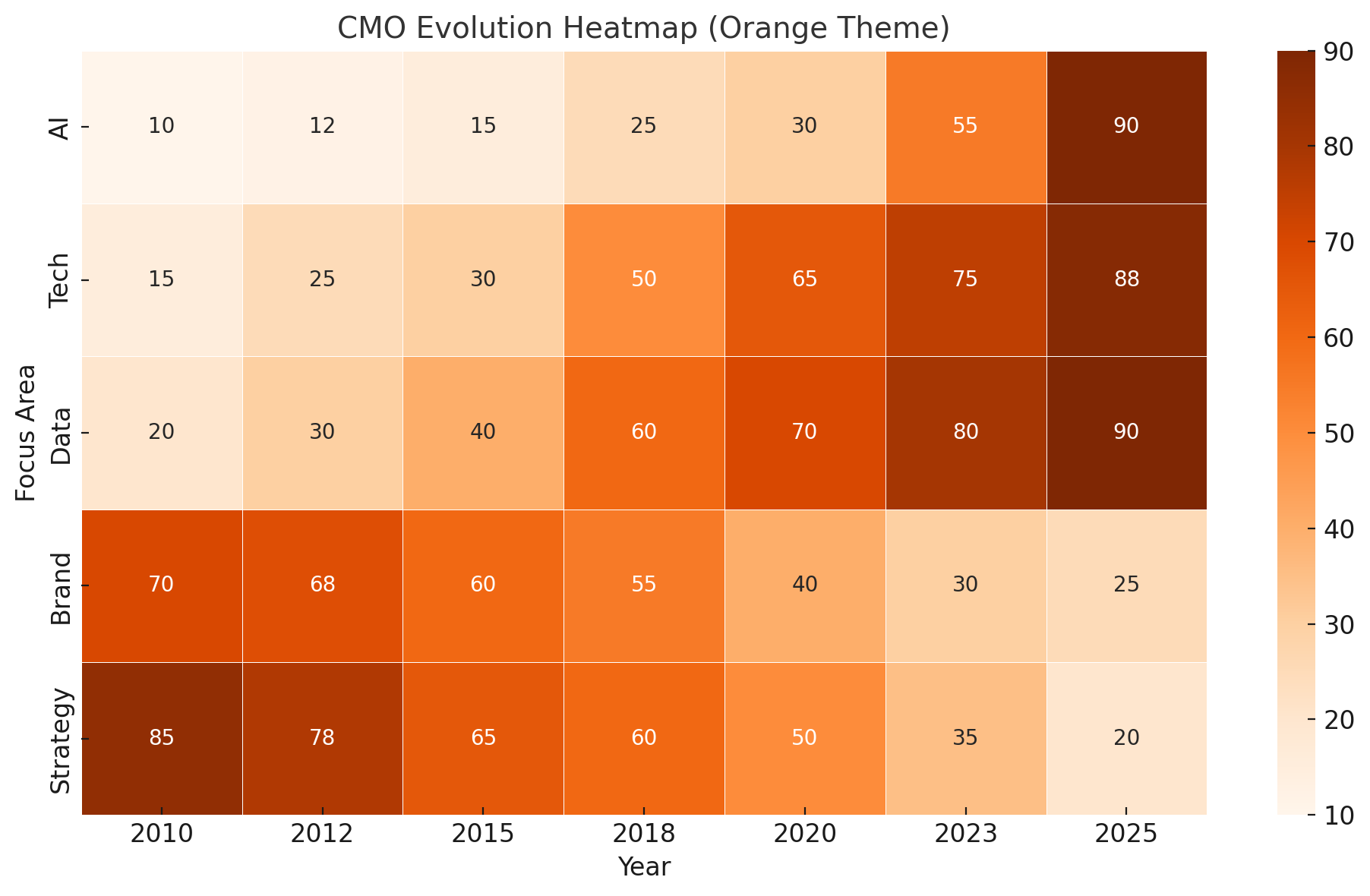
This heatmap shows how the priorities of chief marketing officers (CMOs) have changed over 15 years. Each cell represents the level of focus (from 0 to 100) for a specific area in a given year. Darker shades indicate higher emphasis.
Observations:
In 2010, AI: CMOs placed minimal focus on AI. By 2025, however, it had become a top priority due to its use in content generation, analytics, automation, and customer engagement.
Tech: Technology has gained steady importance. Since 2015, CMOs have adopted digital tools, automation systems, and marketing platforms to improve performance and scale.
Data: Data use has increased consistently. By 2025, CMOs will rely heavily on customer data platforms, analytics, and predictive modeling to guide campaigns and measure impact.
Brand: Brand management was a key area in 2010 but has gradually declined. This shift reflects a transition from brand storytelling to performance and data-driven execution.
Strategy: Strategic planning dominated in the early years but has steadily decreased. Executing real-time insights and AI tools has replaced long-term planning as the primary focus.
CMO Role Evolution Timeline (2010–2025)
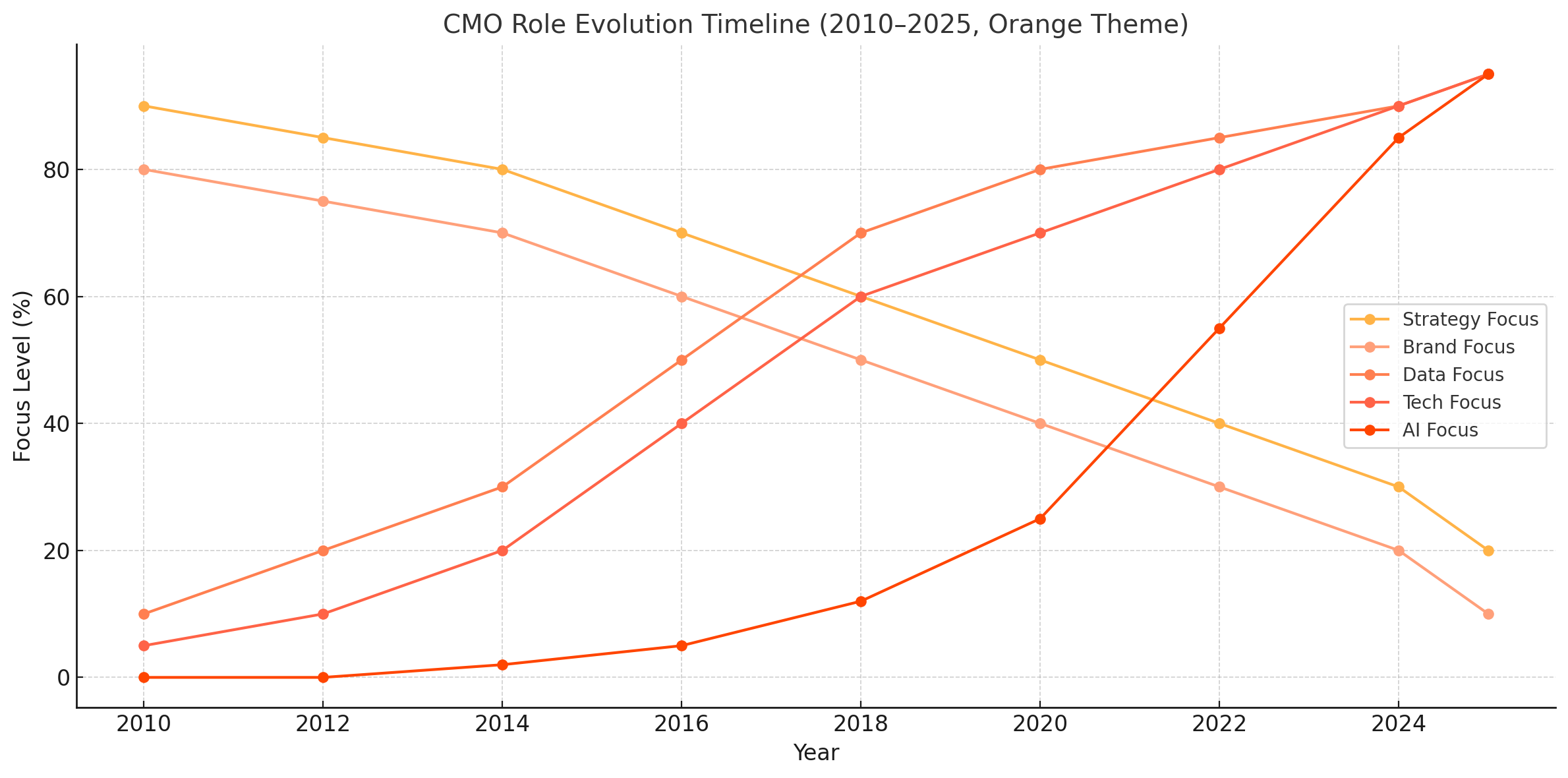
This timeline chart illustrates how the priorities of Chief Marketing Officers (CMOs) have shifted across five key focus areas over 15 years. The data highlights a transition from traditional leadership functions toward digital and data-driven strategies.
Key Trends:
Strategy Focus: Strategy ranked highest in 2010 at 90 percent but declined steadily to 20 percent by 2025. CMOs have moved away from long-range planning toward operational execution and adaptive decision-making.
Brand Focus: Brand-related responsibilities dropped from 80 percent in 2010 to 10 percent in 2025. This decline reflects a reduced emphasis on top-level branding efforts as CMOs focus more on measurable performance and automation.
Data Focus: Data grew from 10 percent in 2010 to 95 percent in 2025. This increase shows CMOs’ reliance on analytics, customer segmentation, and real-time reporting to guide marketing performance and budget allocation.
Tech Focus: Technology investments rose from 5 percent in 2010 to 95 percent in 2025. CMOs have adopted marketing platforms, automation tools, and integrated systems to increase operational efficiency and customer engagement.
AI Focus: AI remained minimal until 2016 but accelerated sharply after 2020, reaching 95 percent in 2025. CMOs now use AI for content generation, targeting, personalization, campaign optimization, and customer interaction.
CMO Tenure vs CMO Role Focus (2010–2025)
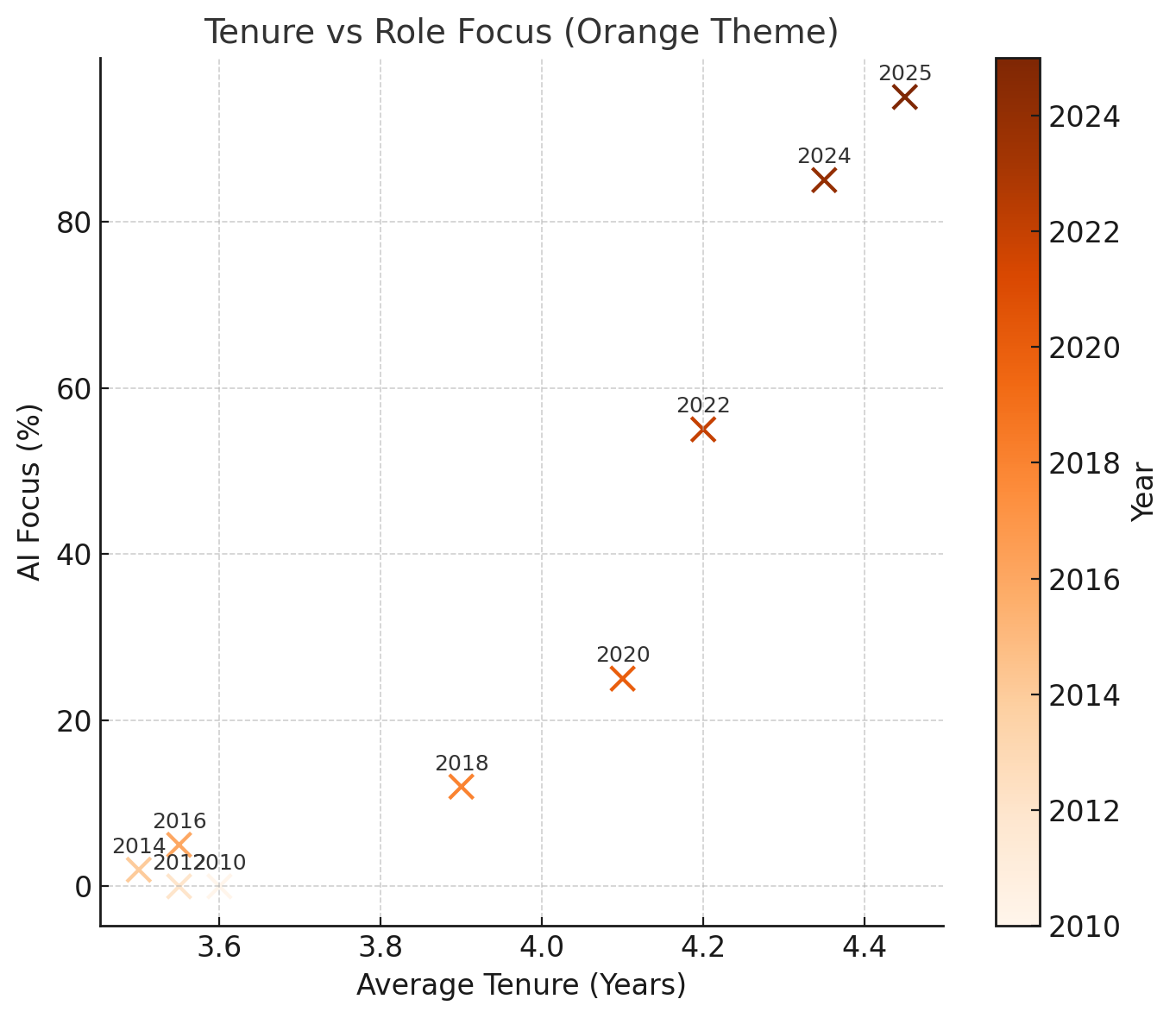
This scatter plot displays the relationship between the average tenure of Chief Marketing Officers (CMOs) and their emphasis on AI from 2010 to 2025.
Key Trends:
2010–2016: CMO tenure remained below 3.6 years, and AI held little relevance. During this period, the role focused on brand development and strategic planning.
2018–2020: As tenure approached 4.0 years, AI adoption began to rise. CMOs started incorporating automation and digital tools into their operations.
2022–2025: With tenure nearing 4.5 years, AI focus increased sharply, exceeding 90 percent by 2025. CMOs with longer tenures drive AI use in decision-making, personalization, and operational efficiency.
AI-CMO Specialization & Capability Shift
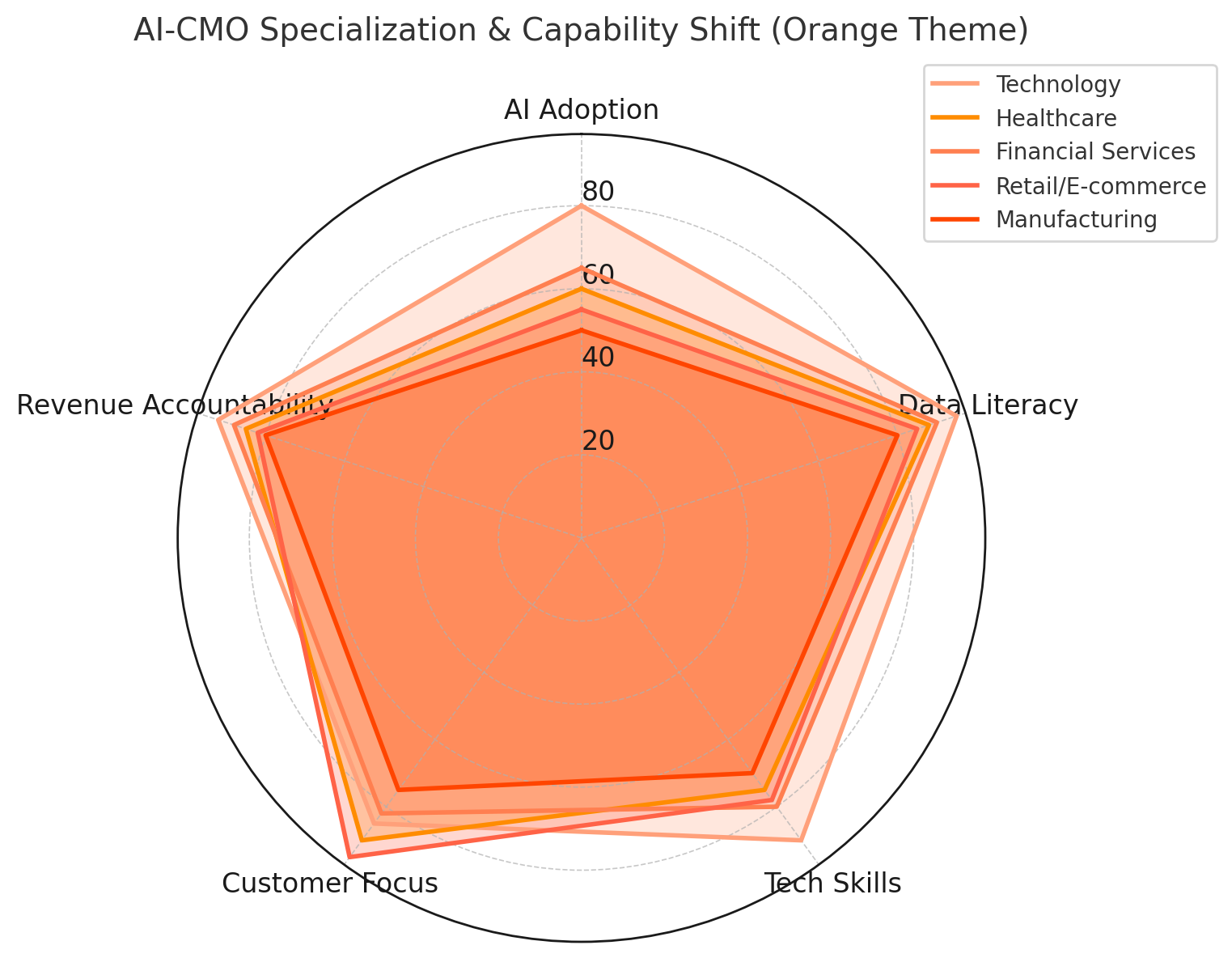
This radar chart compares industry expectations for AI-powered CMOs across five capability areas. It highlights how the role has evolved regarding skills and technology adoption across sectors.
Focus Areas:
AI Adoption: Technology leads with the highest AI adoption expectations, followed by healthcare and financial services. Manufacturing lags, indicating slower AI integration in marketing operations.
Data Literacy: All sectors rate data literacy as essential. Technology and financial services rank it highest, reflecting the demand for CMOs who can interpret, apply, and act on data effectively.
Tech Skills: CMOs in technology and retail require stronger technical competence than those in healthcare and manufacturing. The ability to work with Martech platforms, automation tools, and digital stacks is increasingly standard.
Customer Focus: Retail and healthcare emphasize customer focus, which is driven by direct consumer interaction. Manufacturing rates it lower, reflecting a more operational marketing role.
Revenue Accountability: Every sector expects CMOs to own revenue outcomes. Technology and financial services place the most emphasis here, tying marketing performance directly to economic impact
Salary vs Company Size for CMOs
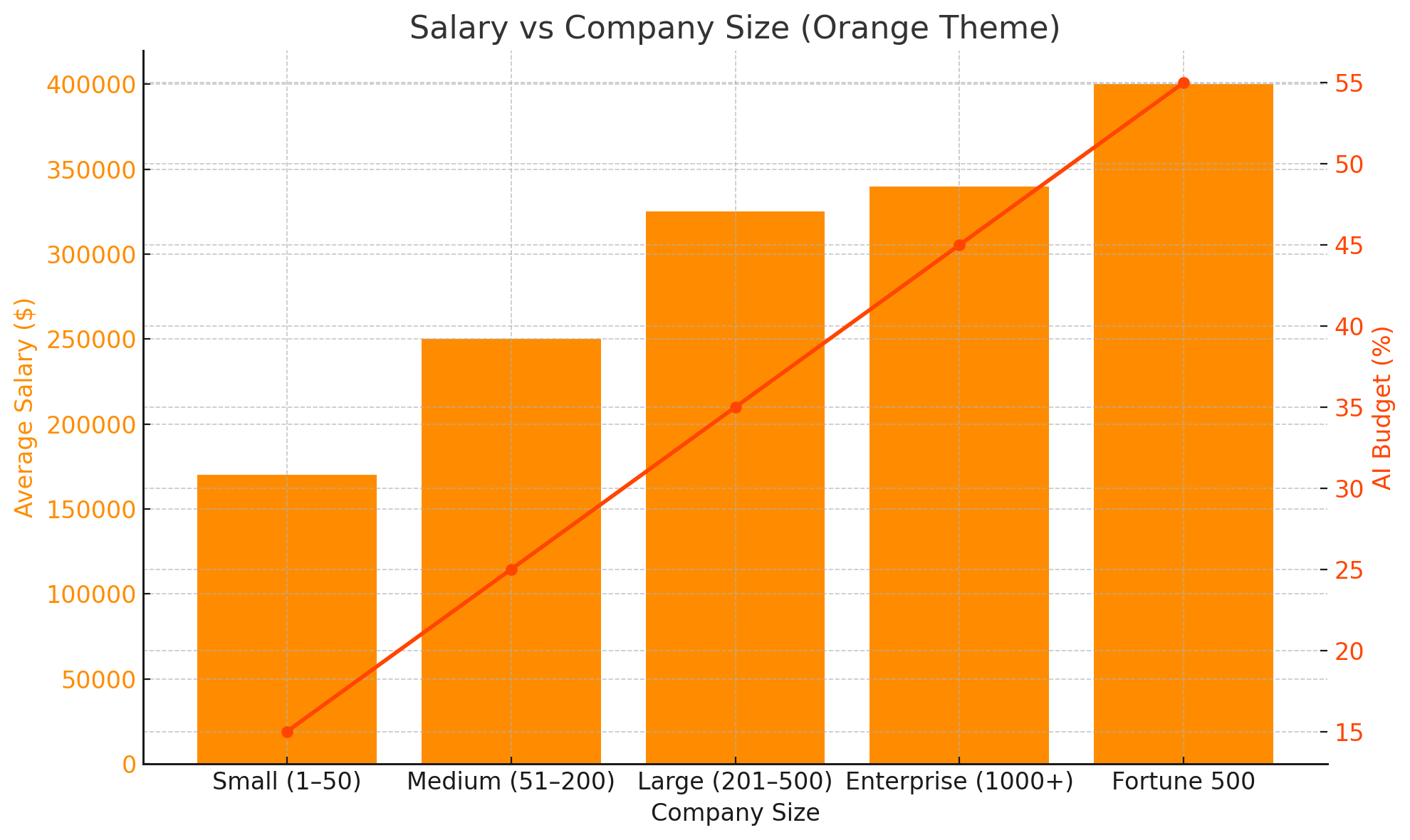
This chart compares average CMO salaries with AI budget allocations across different company sizes.
Key Insights:
Salary Scales with Company Size: Small companies (1–50 employees) offer an average CMO salary of approximately $170,000. In contrast, Fortune 500 companies pay up to $400,000, reflecting broader responsibilities and organizational complexity.
AI Budgets Increase with Scale: AI budgets grow from 15 percent in small firms to 55 percent in Fortune 500 companies. Larger organizations allocate more funding to AI-driven marketing, including automation, analytics, and targeting.
Role Expectations Expand: CMOs are expected to drive measurable growth as company size increases. Higher compensation and larger AI budgets reflect the demand for data-driven leadership and operational impact.
Future Forecast (2025–2040): AI Maturity Low / Organizational Adoption High
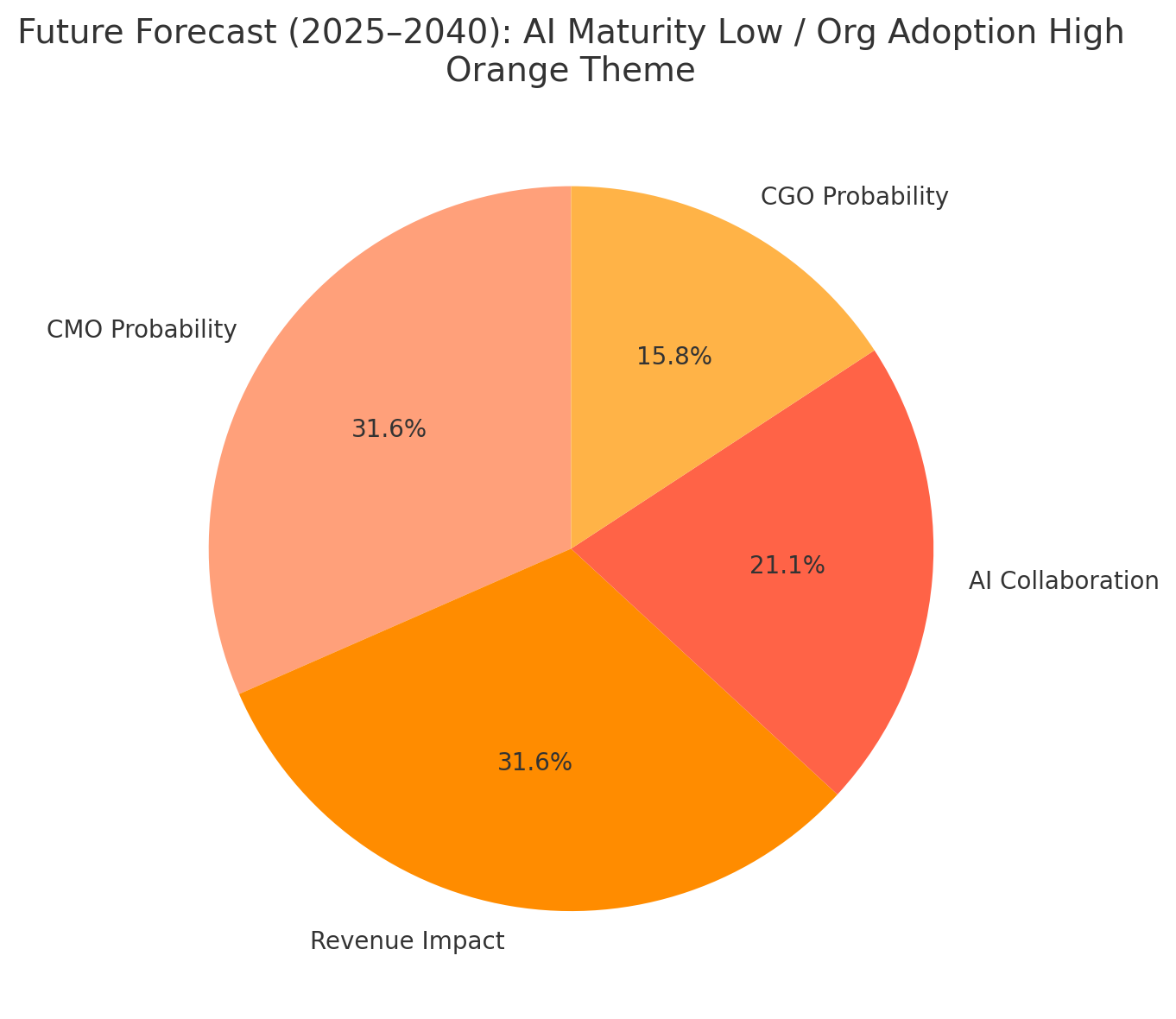
This pie chart presents projected outcomes for a scenario where organizations broadly adopt AI, but the technology remains underdeveloped. The analysis highlights how this imbalance affects marketing leadership and business performance.
Breakdown:
CMO Probability (31.6%): CMOs remain central to marketing leadership. Despite AI limitations, companies rely on experienced executives to manage growth and oversee AI integration.
Revenue Impact (31.6%): High AI adoption at the organizational level can still drive revenue, even with low AI sophistication. Basic automation and process optimization contribute to measurable gains.
AI Collaboration (21.1%): Collaboration between CMOs and AI systems remains limited. With underdeveloped AI capabilities, tools serve primarily as support rather than contributing to autonomous decision-making.
CGO Probability (15.8%): In this scenario, the likelihood of organizations shifting to Chief Growth Officers is low. AI’s limited capacity reduces the need for broader growth-centric leadership roles.
Regional Trends for CMOs
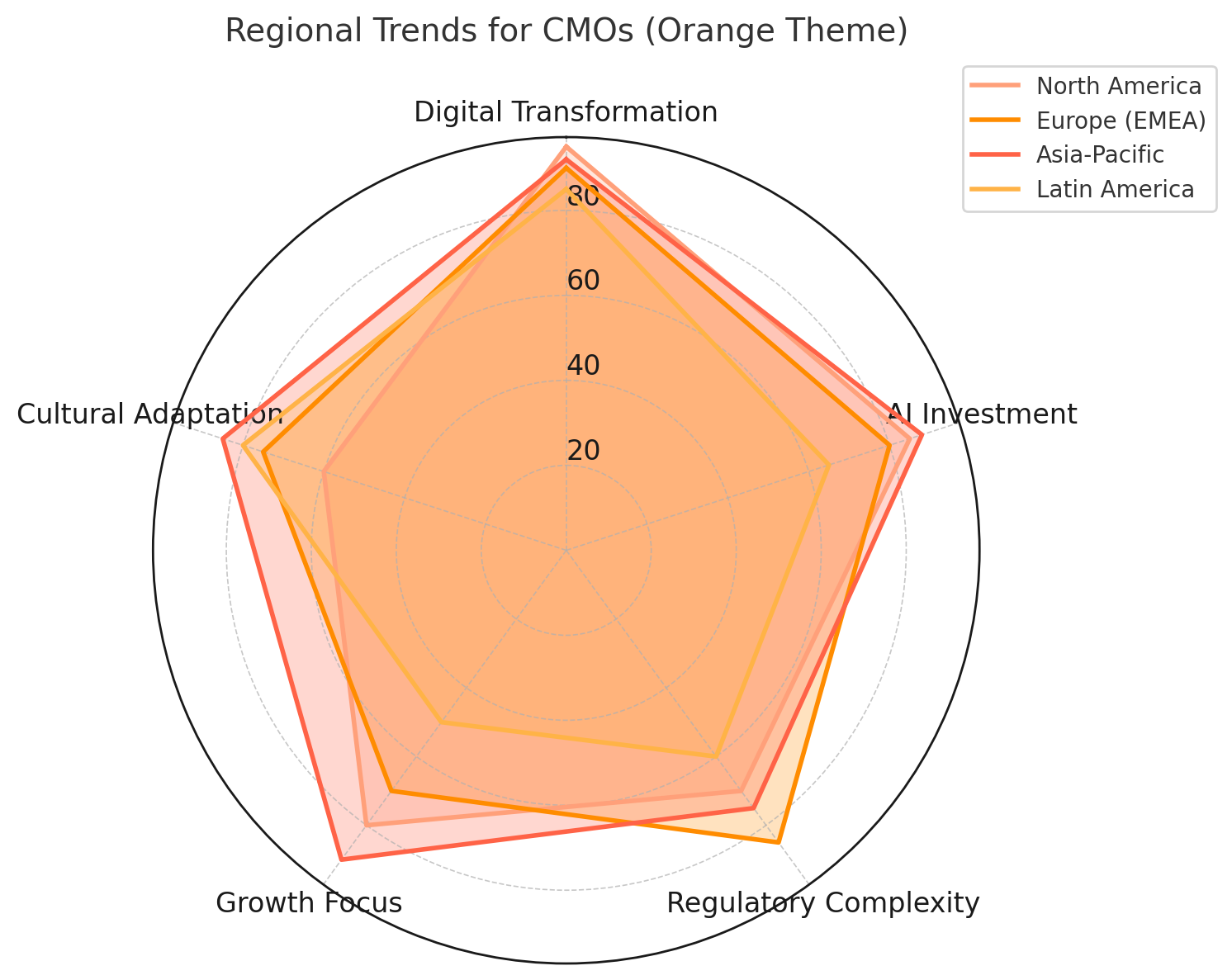
This radar chart compares regional differences in five key areas relevant to Chief Marketing Officers: digital transformation, AI investment, regulatory complexity, growth focus, and cultural adaptation.
Regional Insights:
North America: Leads in digital transformation and AI investment. Emphasizes growth, though cultural adaptation remains moderate.
Europe (EMEA): Deals with high regulatory complexity. Shows consistent investment in AI and digital tools, with strong regional market adaptability.
Asia-Pacific: Ranks highest in digital transformation, AI investment, and growth focus. Displays strong adaptability across diverse consumer markets.
Latin America: Scores lower in AI investment and growth focus. Performs better in cultural adaptation, though regulatory and operational challenges persist.
Marketing leadership is evolving alongside technological investment and operational demands.
North America and Asia-Pacific lead in digital readiness, while Europe balances innovation with regulatory oversight. Latin America shows adaptability but faces investment constraints.
Forecast models suggest that in organizations with high AI adoption and low technical maturity, CMOs will continue to lead performance efforts. However, the shift toward broader growth roles may remain limited.
Regardless of region or future scenario, CMOs must combine business performance, technical fluency, and contextual awareness to remain effective and accountable.
Evolving Role of the AI-Powered CMO (2025–2040): FAQs
How will the CMO role change between 2025 and 2040?
CMOs are shifting from brand and strategy functions to data-driven leadership. Their focus now includes revenue performance, AI integration, and digital execution.
Which regions lead in digital transformation and AI adoption among CMOs?
Asia-Pacific and North America lead in both areas. Europe progresses steadily while managing regulatory demands. Latin America adapts well culturally but trails in AI investment.
What skills are most relevant for future CMOs?
Essential skills include data interpretation, technical literacy, AI collaboration, customer insight, and accountability for results.
How does company size affect CMO compensation?
Larger companies, particularly Fortune 500 firms, offer higher salaries, with averages reaching $400,000. These companies also invest more in AI to support marketing operations.
How does AI maturity influence the CMO role?
In settings with high AI adoption but low technical maturity, CMOs remain critical to strategic execution. However, AI tools tend to assist rather than operate independently.
Are CMOs being replaced by Chief Growth Officers (CGOs)?
No. CGO transitions remain limited where AI maturity is low. CMOs continue to lead growth efforts and oversee AI integration.
What regional challenges affect CMOs?
- North America: Strong pressure for growth and AI performance
- Europe: Complex regulatory requirements
- Asia-Pacific: Rapid digital scaling
- Latin America: Budget limitations and operational complexity
What does AI budget allocation reveal about organizational maturity?
Higher AI budgets often reflect larger companies with more advanced digital infrastructure. These funds support automation, targeting, and predictive analytics.
What happens when AI adoption is high but maturity is low?
CMOs retain influence over performance and revenue. However, AI collaboration remains limited, and the shift to broader growth roles is slower.
What defines success for CMOs moving forward?
Successful CMOs combine business performance with technical competence and regional awareness. They lead through measurable outcomes and operational clarity.

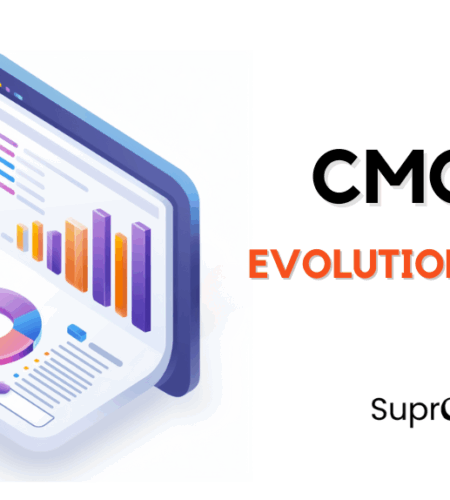
Comments